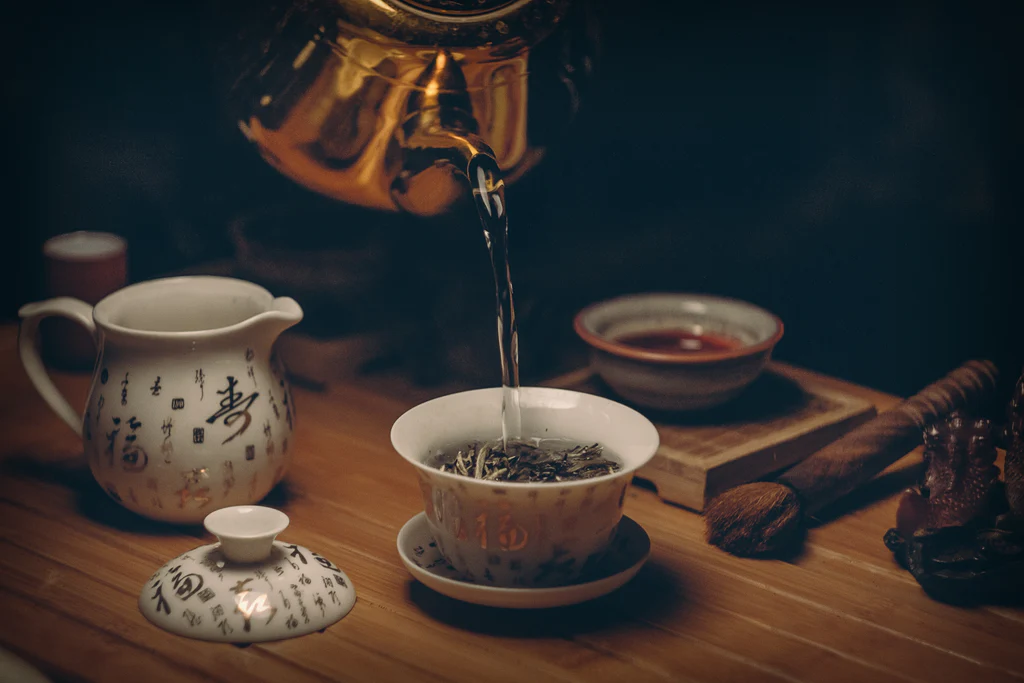Blog
The Ultimate Guide to Choosing Loose-Leaf Tea
Tea is one of the most beloved beverages worldwide, enjoyed by millions for its soothing qualities and variety of flavors. While bagged tea is common, loose-leaf tea offers a superior experience, delivering richer flavors and more aromatic aromas. Whether you’re a tea aficionado or a beginner, understanding how to choose the best loose-leaf tea can elevate your tea-drinking experience to new heights. This ultimate guide will walk you through the essential aspects of selecting the perfect loose-leaf tea for your taste.
1. Understanding Loose-Leaf Tea vs. Bagged Tea
The key difference between loose-leaf tea and bagged tea lies in the quality of the tea leaves. Loose-leaf tea is made from whole or large pieces of tea leaves, which offer a fuller, more complex flavor profile when brewed. Bagged tea, on the other hand, typically uses broken or fannings, which are smaller pieces of tea leaves that can lack the depth of flavor and aroma.

2. Types of Loose-Leaf Tea
Before choosing loose-leaf tea, it’s important to familiarize yourself with the different types. Each type of tea comes from the Camellia sinensis plant but undergoes different processes to create unique flavors and characteristics. Here’s a breakdown of the main types:
- Black Tea: This is the most fully oxidized type of tea, resulting in a bold, strong flavor. Black tea often has malty, sweet, and sometimes smoky notes. Popular black teas include Darjeeling, Assam, and Ceylon.
- Green Tea: Known for its delicate and grassy flavor, green tea undergoes minimal oxidation. It’s packed with antioxidants and is generally lighter in taste compared to black tea. Popular green teas include Sencha, Dragon Well (Longjing), and Matcha.
- White Tea: The least processed of all teas, white tea is made from young tea buds that are simply dried or lightly steamed. It has a delicate, light, and subtly sweet flavor. Popular white teas include Silver Needle and White Peony.
- Oolong Tea: This tea is partially oxidized, falling between black and green tea in terms of flavor and color. It offers a wide range of flavors, from floral and fruity to rich and roasted. Popular oolong teas include Tie Guan Yin and Milk Oolong.
- Herbal Tea: Technically not a true tea, herbal teas are made from herbs, flowers, fruits, and other botanicals. These teas are caffeine-free and come in a wide variety of flavors. Examples include chamomile, peppermint, and hibiscus.
- Pu-erh Tea: A fermented tea with a rich, earthy flavor, Pu-erh is often enjoyed by those who like a more intense, aged taste. It’s typically made in two styles: raw (Sheng) and ripe (Shou) Pu-erh.

3. Factors to Consider When Choosing Loose-Leaf Tea
When selecting loose-leaf tea, several factors come into play to ensure you’re getting the best possible brew. Here’s what to keep in mind:
A. Taste Preferences
Your personal taste preferences should be your primary guide in choosing loose-leaf tea. Do you prefer bold, strong flavors, or something light and refreshing? Are you looking for something sweet or savory? Understanding the flavor profile of different tea types will help you make a more informed choice.
- Bold flavors: Choose black tea or oolong tea.
- Light and refreshing: Opt for green tea or white tea.
- Floral or herbal notes: Try oolong tea or herbal teas like chamomile or lavender.
B. Caffeine Content
Loose-leaf tea comes in various caffeine levels, so it’s essential to consider how much caffeine you want in your tea.
- High caffeine: Black tea, Pu-erh tea, and some oolong teas.
- Moderate caffeine: Green tea and oolong tea.
- No caffeine: Herbal tea.
C. Flavor Notes
Loose-leaf tea offers an incredible variety of flavors, from floral and fruity to smoky and spicy. When selecting loose-leaf tea, consider what types of flavors you enjoy.
- Floral notes: Look for oolong tea or white tea.
- Fruity notes: Try green tea or herbal teas like hibiscus.
- Smoky or malty: Choose black tea, particularly Lapsang Souchong for a smoky flavor.
D. Freshness
The fresher the tea, the better the flavor. When buying loose-leaf tea, ensure it’s from a reputable supplier who guarantees freshness. Tea should be stored in an airtight container in a cool, dark place to preserve its flavor.
4. Where to Buy Loose-Leaf Tea
You can find high-quality loose-leaf tea from various sources, including local tea shops, online retailers, and specialty stores. When buying online, look for reputable suppliers that offer detailed information about the tea’s origin, processing methods, and flavor profile. Many suppliers also offer sample sizes, which are ideal for trying out different teas before committing to a larger quantity.
5. How to Brew Loose-Leaf Tea
The way you brew your loose-leaf tea can greatly affect its flavor. Here’s how to get the best results:
A. Use the Right Equipment
Invest in a good tea infuser or tea strainer to hold your loose tea leaves while they steep. If you prefer, you can also use a tea ball or tea sachets. Alternatively, you can use a teapot with a built-in strainer.
B. Water Temperature
Different types of tea require different water temperatures for optimal brewing:
- Black tea: 200-212°F (93-100°C).
- Green tea: 150-180°F (65-82°C).
- Oolong tea: 180-200°F (82-93°C).
- White tea: 160-185°F (71-85°C).
- Herbal tea: 200-212°F (93-100°C).
C. Steeping Time
The steeping time will vary depending on the type of tea:
- Black tea: 3-5 minutes.
- Green tea: 2-3 minutes.
- Oolong tea: 4-7 minutes.
- White tea: 4-5 minutes.
- Herbal tea: 5-7 minutes.
Always follow the specific recommendations for the tea you’re brewing to avoid oversteeping and bitterness.
6. How to Store Loose-Leaf Tea
To maintain the freshness and flavor of your loose-leaf tea, proper storage is essential. Here are some tips:
- Keep tea in an airtight container: Light and air degrade the tea’s quality over time.
- Store in a cool, dark place: Avoid storing tea near heat sources or in areas with direct sunlight.
- Avoid storing near strong odors: Tea can absorb odors from its surroundings, so store it away from spices or other strong-smelling foods.
7. Exploring Different Loose-Leaf Tea Blends
Many loose-leaf teas come in exciting blends, combining different tea leaves with herbs, fruits, flowers, and spices to create unique flavors. For example:
- Chai Tea: A spiced black tea blend, often including cinnamon, cardamom, and cloves.
- Earl Grey: A black tea flavored with bergamot oil, creating a fragrant and citrusy brew.
- Jasmine Tea: Typically made from green tea and infused with jasmine flowers for a floral, fragrant taste.
Experimenting with blends is a fun way to explore new flavors and find the perfect tea for your preferences.
Conclusion
Choosing loose-leaf tea is an exciting journey that opens up a world of flavors, aromas, and health benefits. By understanding the types of tea, factors to consider when making your selection, and how to brew and store your tea properly, you can enhance your tea experience. Whether you enjoy a classic black tea, a refreshing green tea, or a flavorful herbal blend, there’s a loose-leaf tea out there to suit every taste. Start exploring today and discover your perfect cup!


